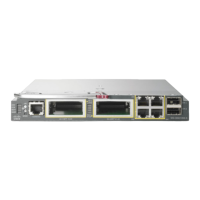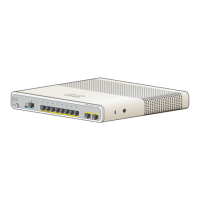Command Default
None
Command Modes
User EXEC
Command History
ModificationRelease
This command was introduced.Cisco IOS XE 3.3SECisco IOS XE 3.3SE
Usage Guidelines
If you do not enter an interface ID, administrative and operational UDLD status for all interfaces appear.
Examples
This is an example of output from the show udld interface-id command. For this display, UDLD is enabled
on both ends of the link, and UDLD detects that the link is bidirectional. The table that follows describes the
fields in this display.
Device> show udld gigabitethernet2/0/1
Interface gi2/0/1
---
Port enable administrative configuration setting: Follows device default
Port enable operational state: Enabled
Current bidirectional state: Bidirectional
Current operational state: Advertisement - Single Neighbor detected
Message interval: 60
Time out interval: 5
Entry 1
Expiration time: 146
Device ID: 1
Current neighbor state: Bidirectional
Device name: Switch-A
Port ID: Gi2/0/1
Neighbor echo 1 device: Switch-B
Neighbor echo 1 port: Gi2/0/2
Message interval: 5
CDP Device name: Switch-A
Table 18: show udld Field Descriptions
DescriptionField
The interface on the local device configured for
UDLD.
Interface
How UDLD is configured on the port. If UDLD is
enabled or disabled, the port enable configuration
setting is the same as the operational enable state.
Otherwise, the enable operational setting depends on
the global enable setting.
Port enable administrative configuration setting
Operational state that shows whether UDLD is
actually running on this port.
Port enable operational state
Command Reference, Cisco IOS XE Everest 16.5.1a (Catalyst 3650 Switches)
352
show udld

